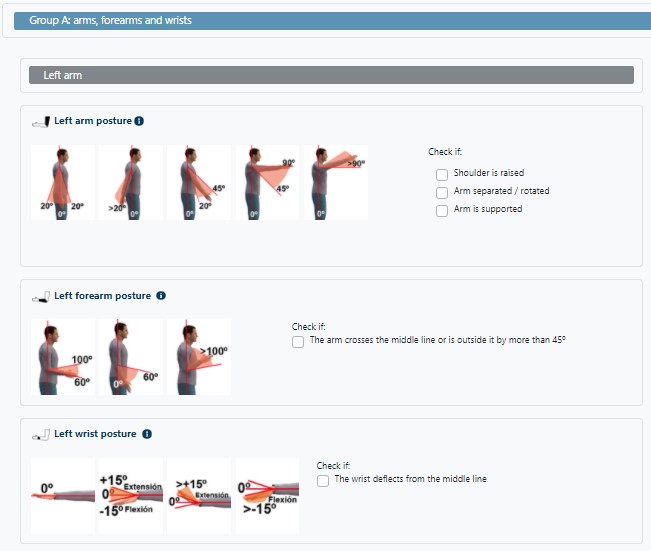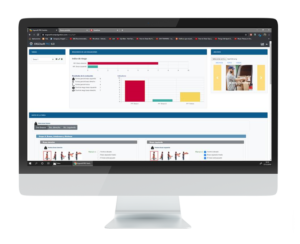RULA (Rapid Upper Limb Assesment)
Developed in 1993 by McAtamney and Corlett, from the University of Nottingham (Institute for Occupational Ergonomics).
It assesses the exposure of workers to risk factors that give rise to a high postural load and that may cause disorders in the upper limbs.
Individual postures, and not series or sequences of postures, are observed, which is why it is necessary to choose among the postures adopted by the worker for their assessment. The postures chosen will be those that represent the greatest postural load due to their duration, frequency, or because they have the greatest deviation from the neutral position.
To assess the risk, the method considers:
- Posture adopted
- Its duration and frequency
- Forces exerted when maintained
The measurements of the adopted postures are angular, carried out directly on the worker or by means of photographs (ensuring that the angles appear to their true extent). The method must be applied on the right side and on the left side of the body separately, unless it is clear which side is submitted to the greatest postural load.
It divides the body into segments that are classified into two groups:
- A (arm, forearm and wrist):









